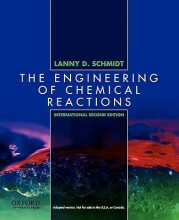Alcohols, Ethers, and Thiols - What Are the Characteristic Reactions of Alcohols?
17 important questions on Alcohols, Ethers, and Thiols - What Are the Characteristic Reactions of Alcohols?
How acidic are alcohols?
Methanol and ethanol have about the same acid ionization constants as water. Larger alcohols are slightly less acidic.
How will an alcohol react in the presence of a strong acid?
In the presence of a strong acid an alcohol will react as a base forming an oxonium ion.
How does an alcohol react with active metals like Li, Na, K, Mg?
Alcohols react with active metals to form metal alkoxides and liberate hydrogen.
- Higher grades + faster learning
- Never study anything twice
- 100% sure, 100% understanding
For what reactions is sodium ethoxide used?
When a strong base is required in a nonaqueous solvent.
How are alcohols converted to haloalkanes?
By reaction with HCl, HBr and HI.
Under what conditions do water-insoluble tertiary alcohols react?
By bubling gaseous HX trough a solution of alcohols in diethyl ether or tetrahydrofuran.
Under what conditions do water-insoluble primary and secondary alcohols react?
Only with concentrate HBr and HI while heated.
By what mechanisms are alcohols converted to haloalkanes?
Tertiary and secondary by a SN1 mechanism.
Primary by a SN2 mechanism.
Primary by a SN2 mechanism.
Why do primary alcohols react trough the SN2 mechanism and tertiary trough SN1?
1. Because of electronic factors. Tertiary carbocations are very stable where primary are not at all.
2. Because of steric factors. The halide ion must be able to approach the substitution center, which is much easier in primary alcohols than in secondary alcohols.
2. Because of steric factors. The halide ion must be able to approach the substitution center, which is much easier in primary alcohols than in secondary alcohols.
Under what conditions can alcohols be dehydrated?
The less substituted the alcohol is the more heat is required to dehydrate the alcohol in the presence of a dehydration reagent like sulfuric acid.
When two isomeric products can be formed during the acid-catalyzed hydration of alcohols which will be formed?
The acid-catalyzed dehydration follows Zaitsev's rule. The more substituted alkene will be predominant.
What are the E1 mechanism steps in the acid-catalyzed dehydration of secondary and tertiary alcohol?
1. Addition of a proton to form a oxonium ion.
2. Breaking of a bond to form a stable molecule or ion.
3. Removal of a proton, regeneration the acid-catalyst.
2. Breaking of a bond to form a stable molecule or ion.
3. Removal of a proton, regeneration the acid-catalyst.
Since the acid-catalyzed hydration of alkenes and the acid-catalyzed dehydration of alcohols are in equilibrium how are they controlled?
1. For the formation of alcohols a large amount of water is used.
2. For the formation of alkenes the water is removed.
2. For the formation of alkenes the water is removed.
How do you determine which stereoisomer are formed in the dehydration of an alcohol?
1. Label the β-carbons.
2. Remove the hydroxyl group and draw in the carbon-carbon double bond from α-carbon to β-carbon.
2. Remove the hydroxyl group and draw in the carbon-carbon double bond from α-carbon to β-carbon.
What product is formed in the oxidation of alcohols?
Primary alcohols can be oxidated to aldehydes and further to carboxylic acids.
Secondary alcohols can be oxidated to ketones.
Tertiary alcohols can not be oxidated.
Secondary alcohols can be oxidated to ketones.
Tertiary alcohols can not be oxidated.
What is the most commonly used reagent for the oxidation of primary alcohols?
Chromic acid, prepared by dissolving Chromium(VI)oxide in aqueous sulfuric acid.
What reagent is used when you want octanal as a product and not octanoic acid?
Pyridinium chlorochromate is a selective oxidation reagent.
Try our study magic for free
a PDF, study it super fast
- No sign up, email or credit card needed!
- AI makes unlimited flashcards
- Get unlimited quizzes and tests
- Ask AI anything
Create a notebook
- No sign up, email or credit card needed!
- Have and keep perfect overview
- Make flashcards, notes and mind maps
- Review, test and score!
The question on the page originate from the summary of the following study material:
- A unique study and practice tool
- Never study anything twice again
- Get the grades you hope for
- 100% sure, 100% understanding
Remember faster, study better. Scientifically proven.
































